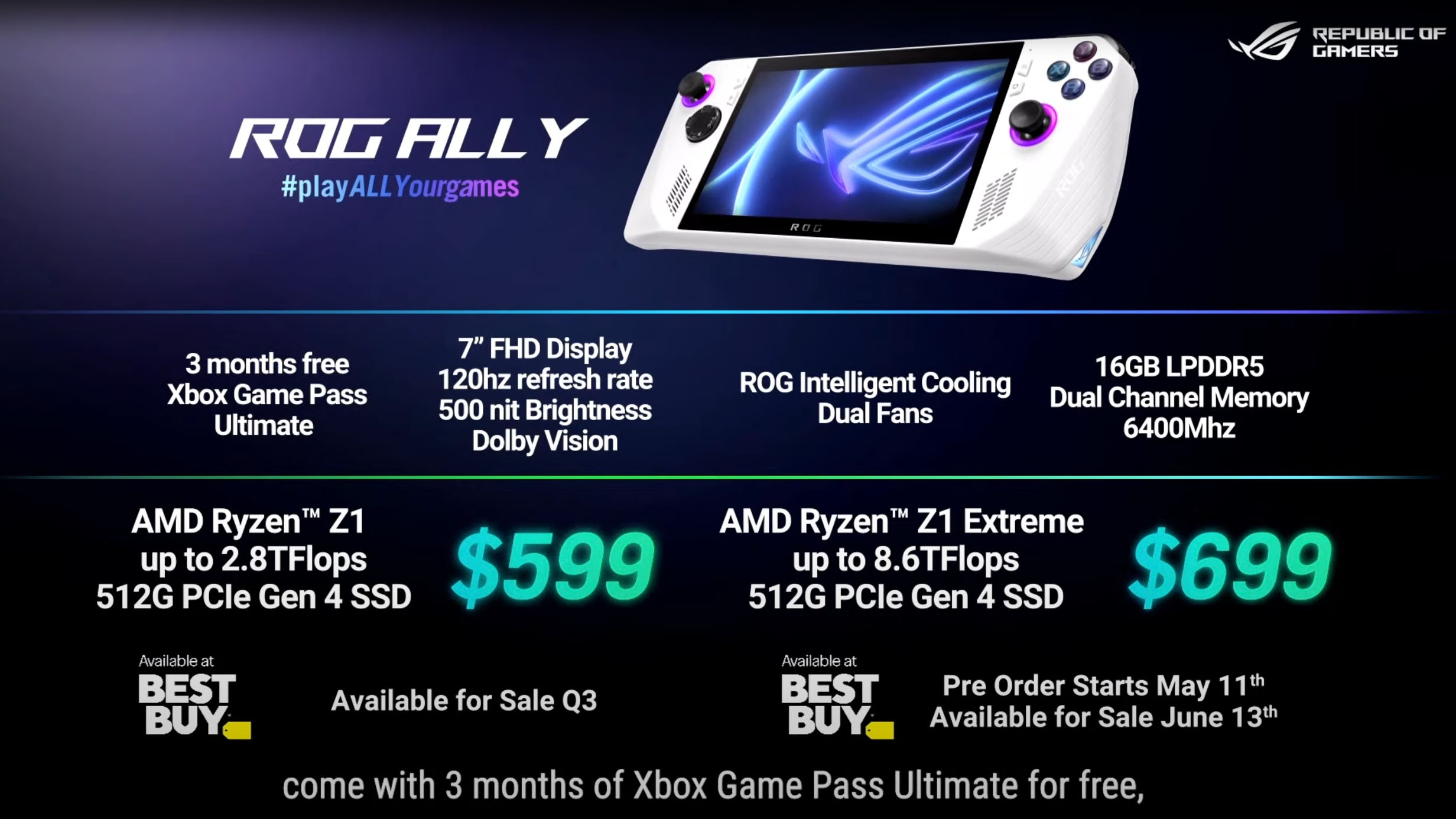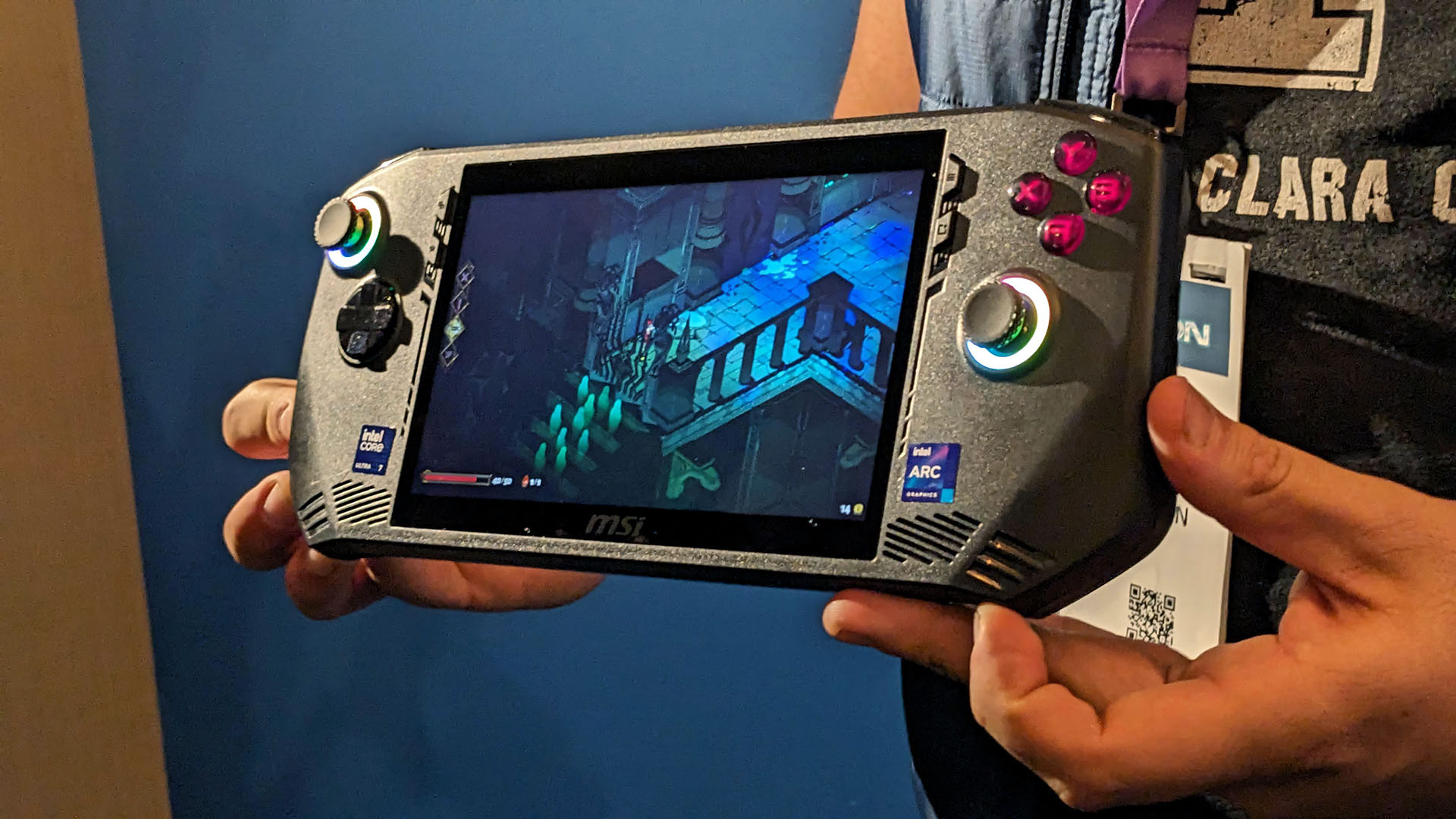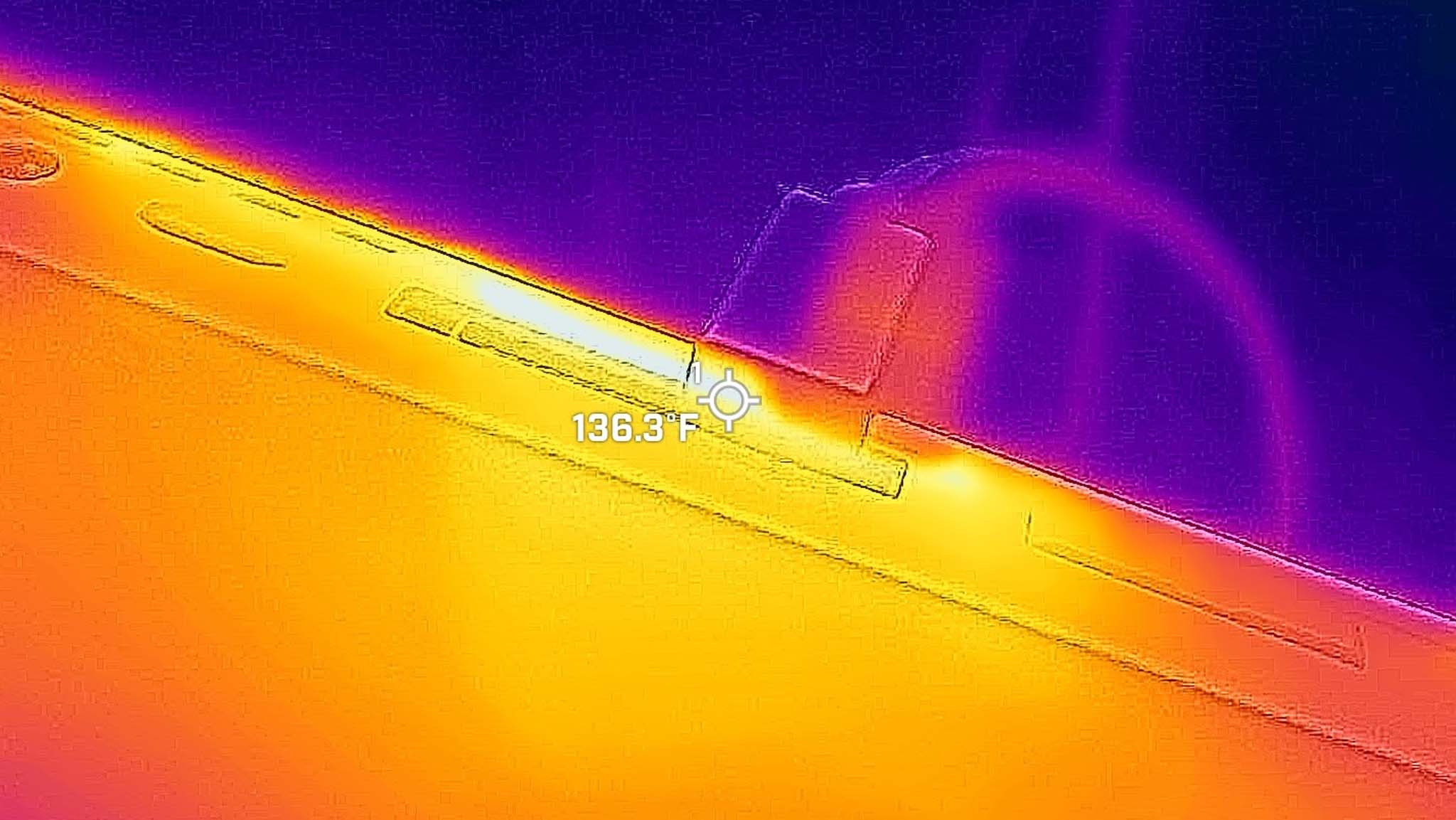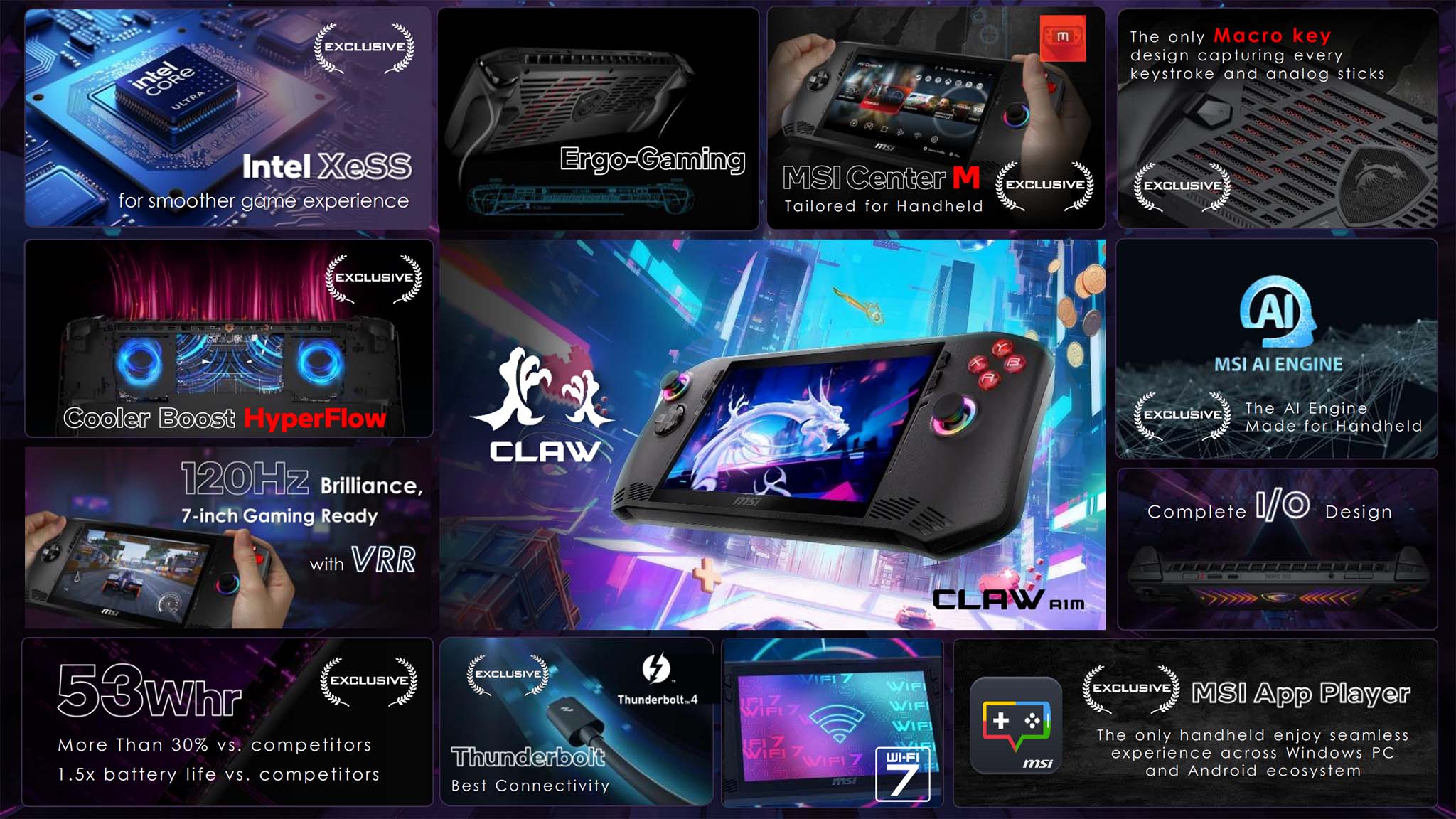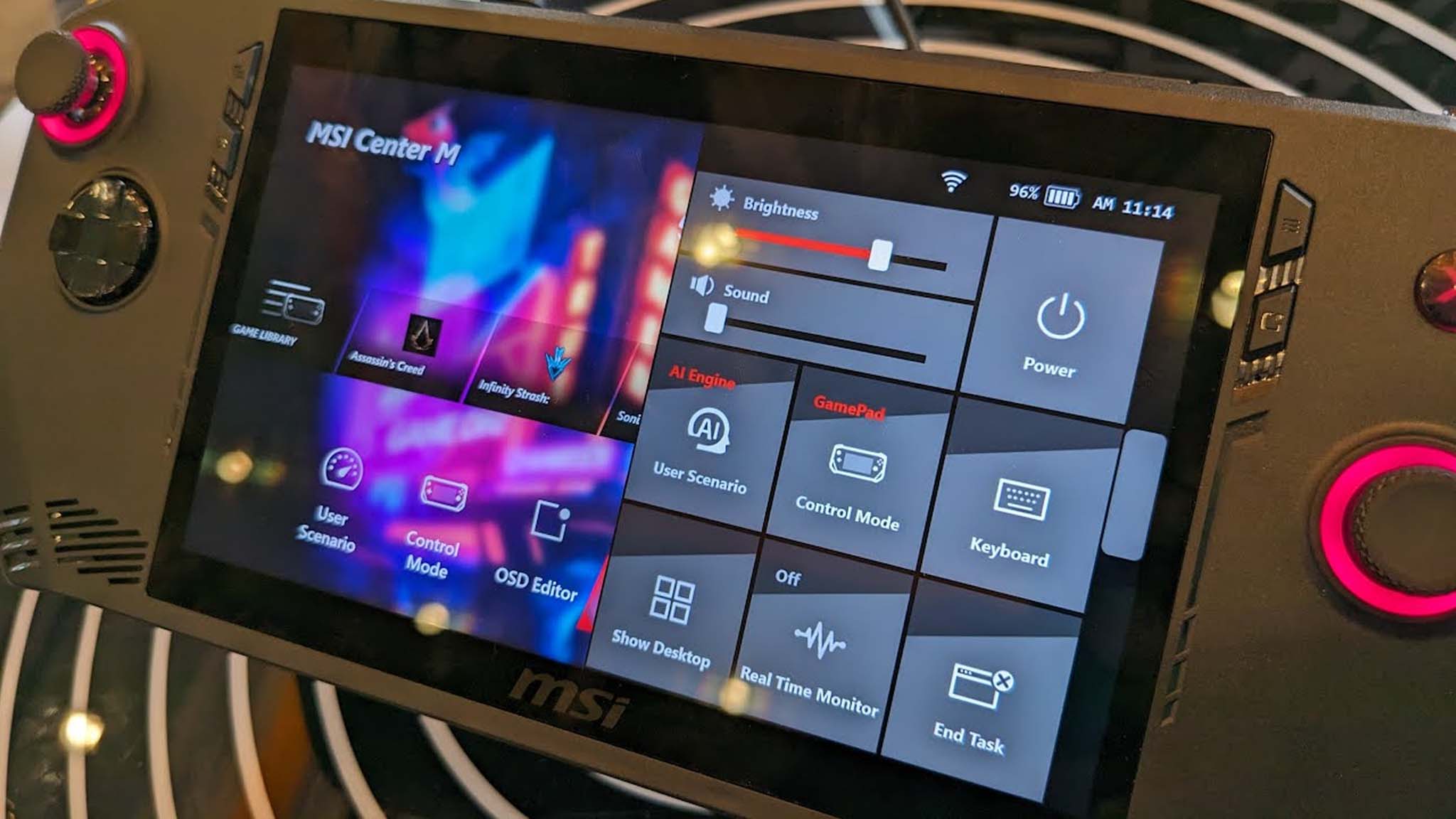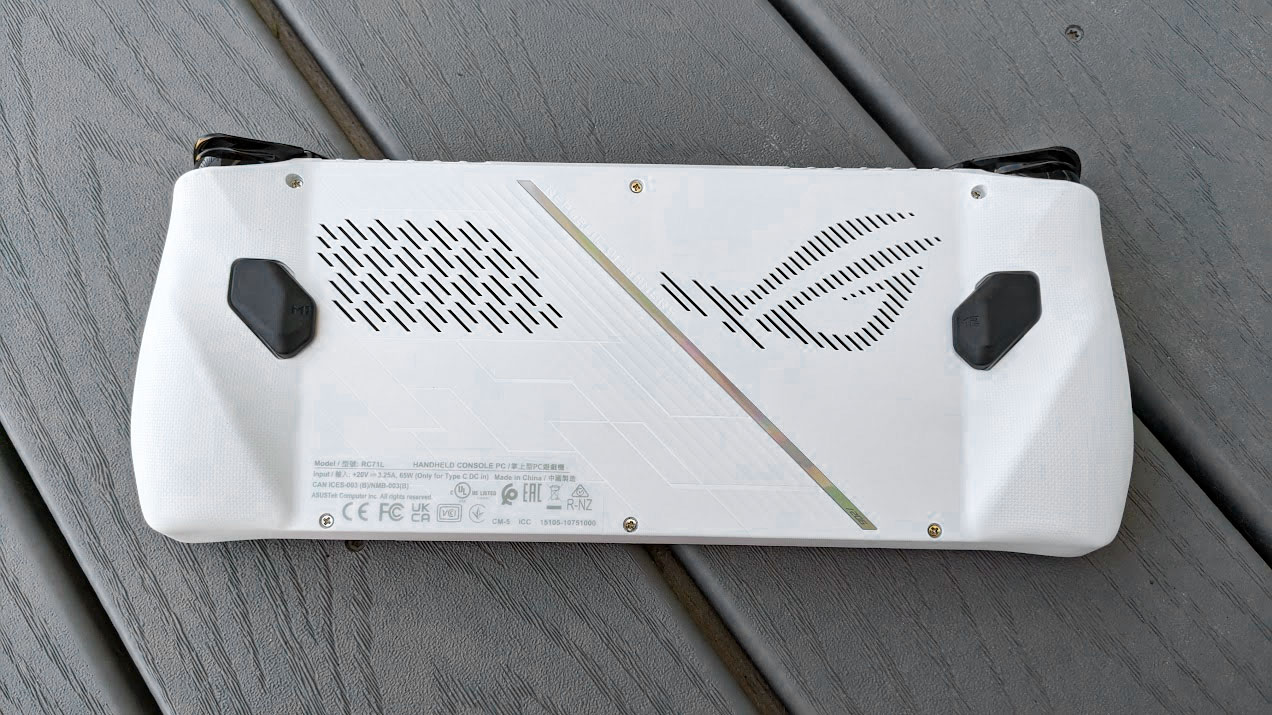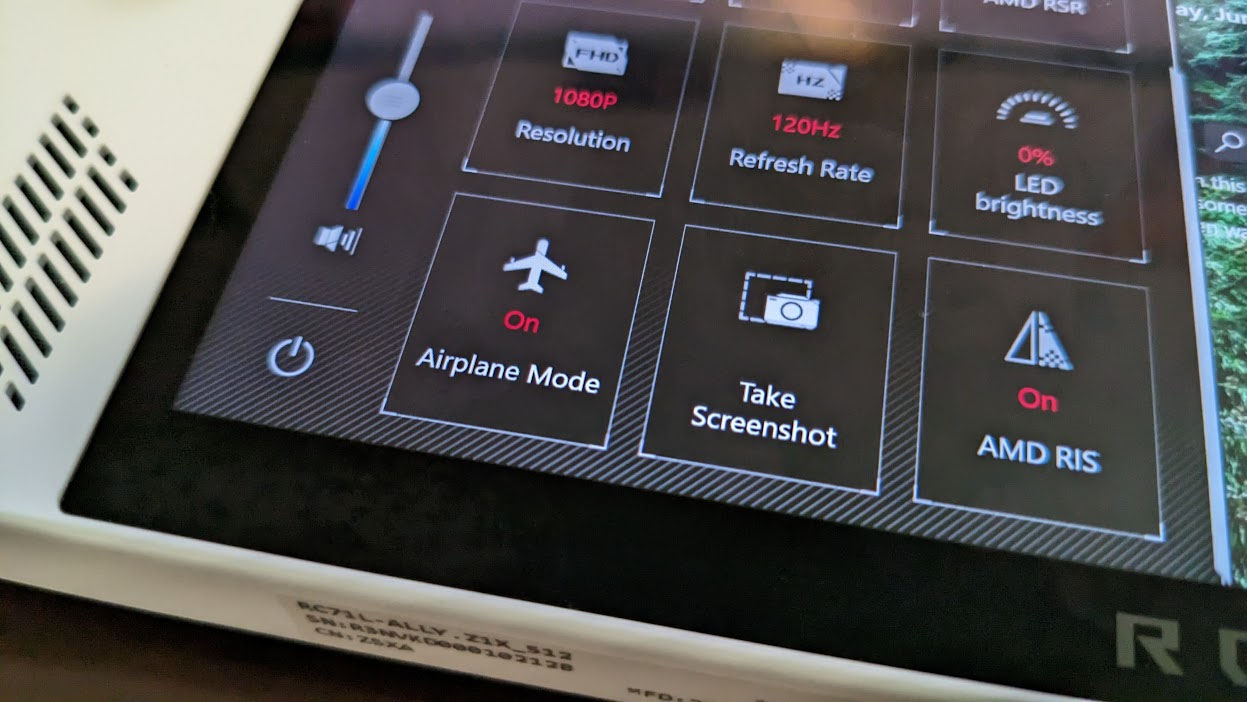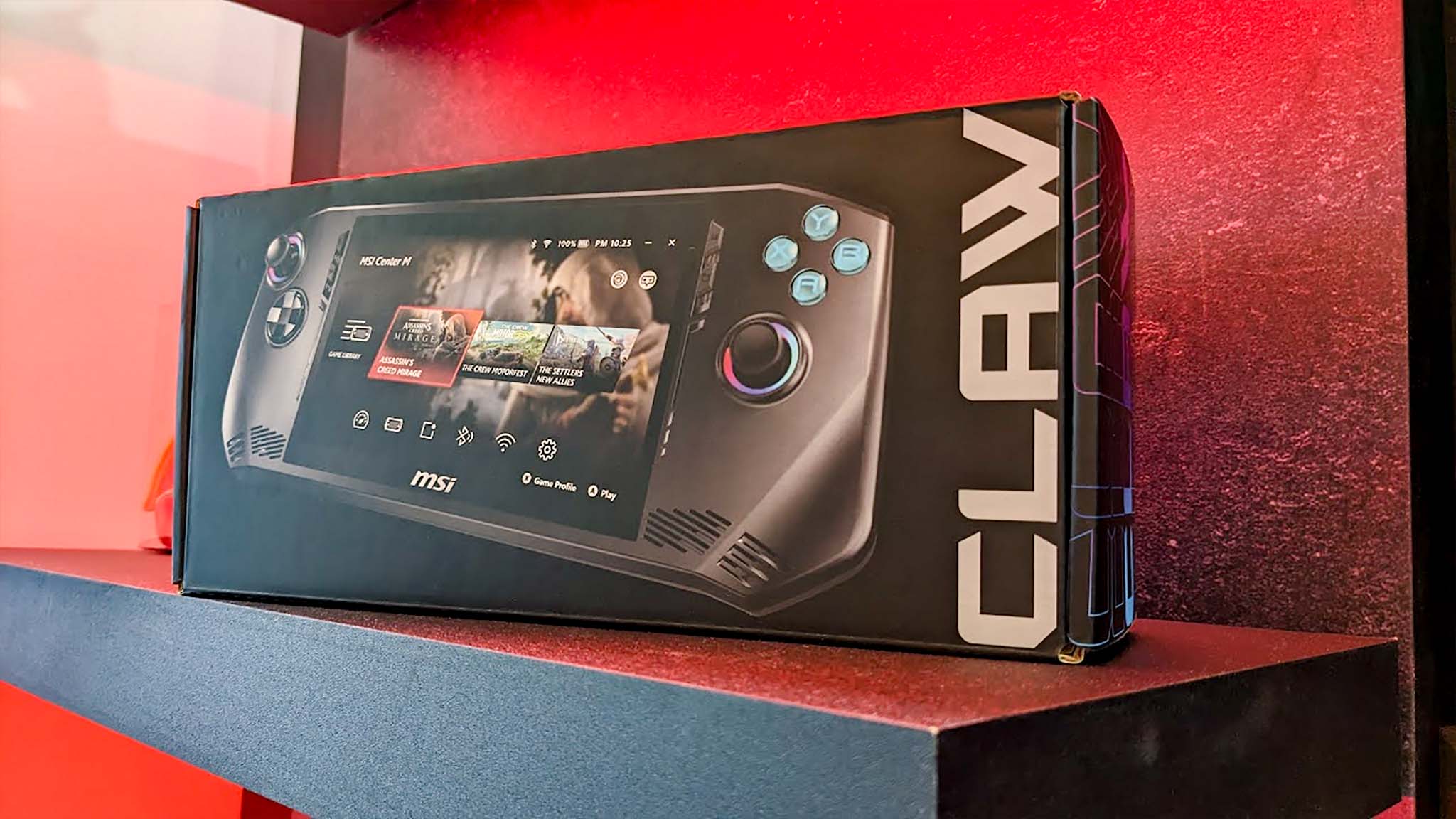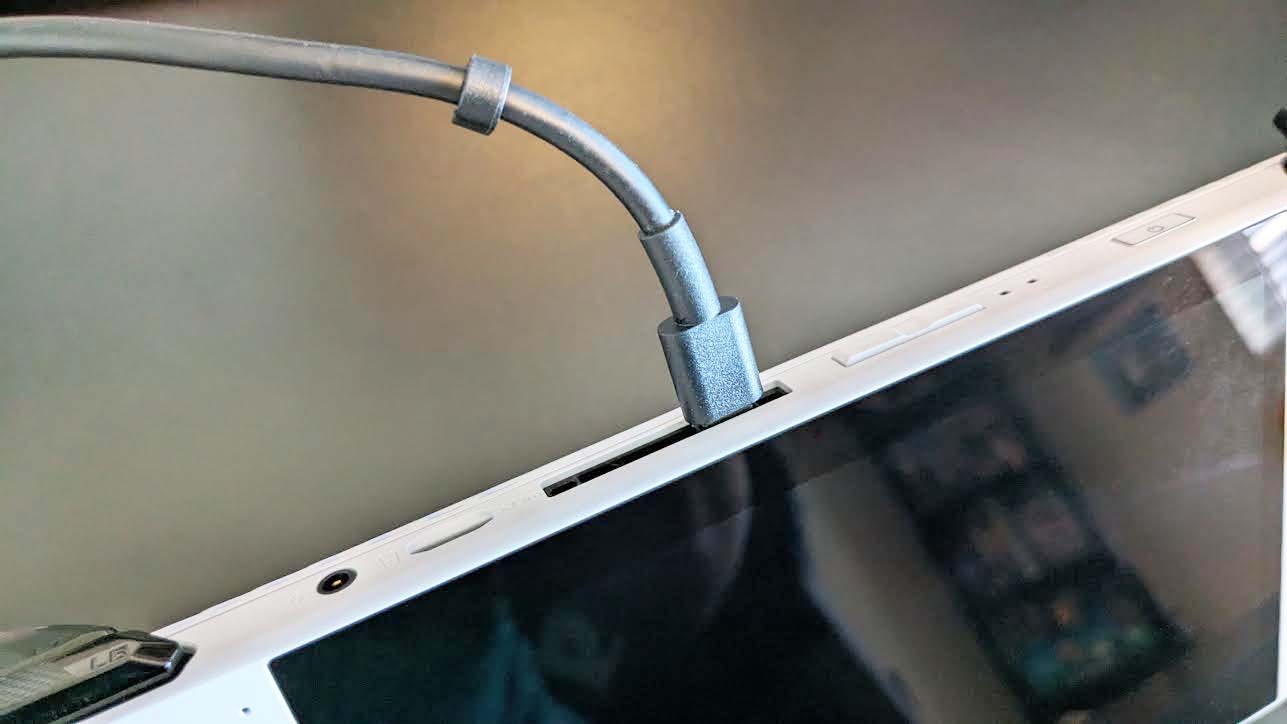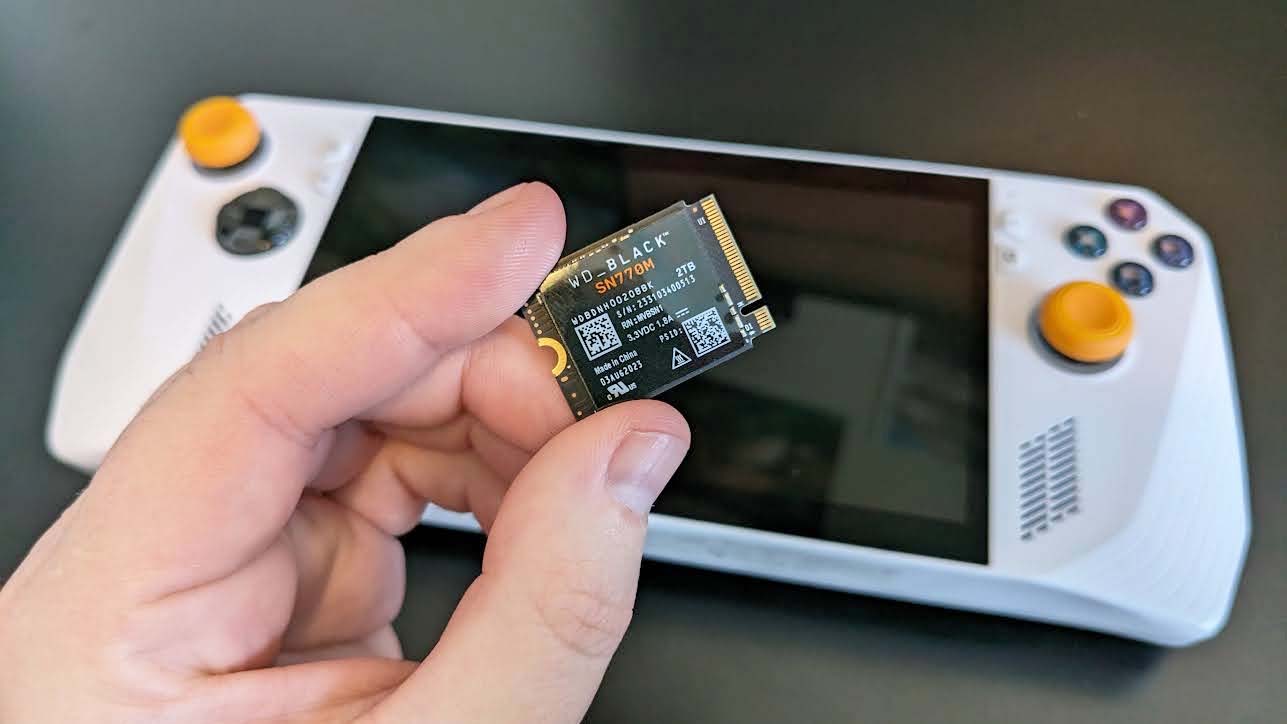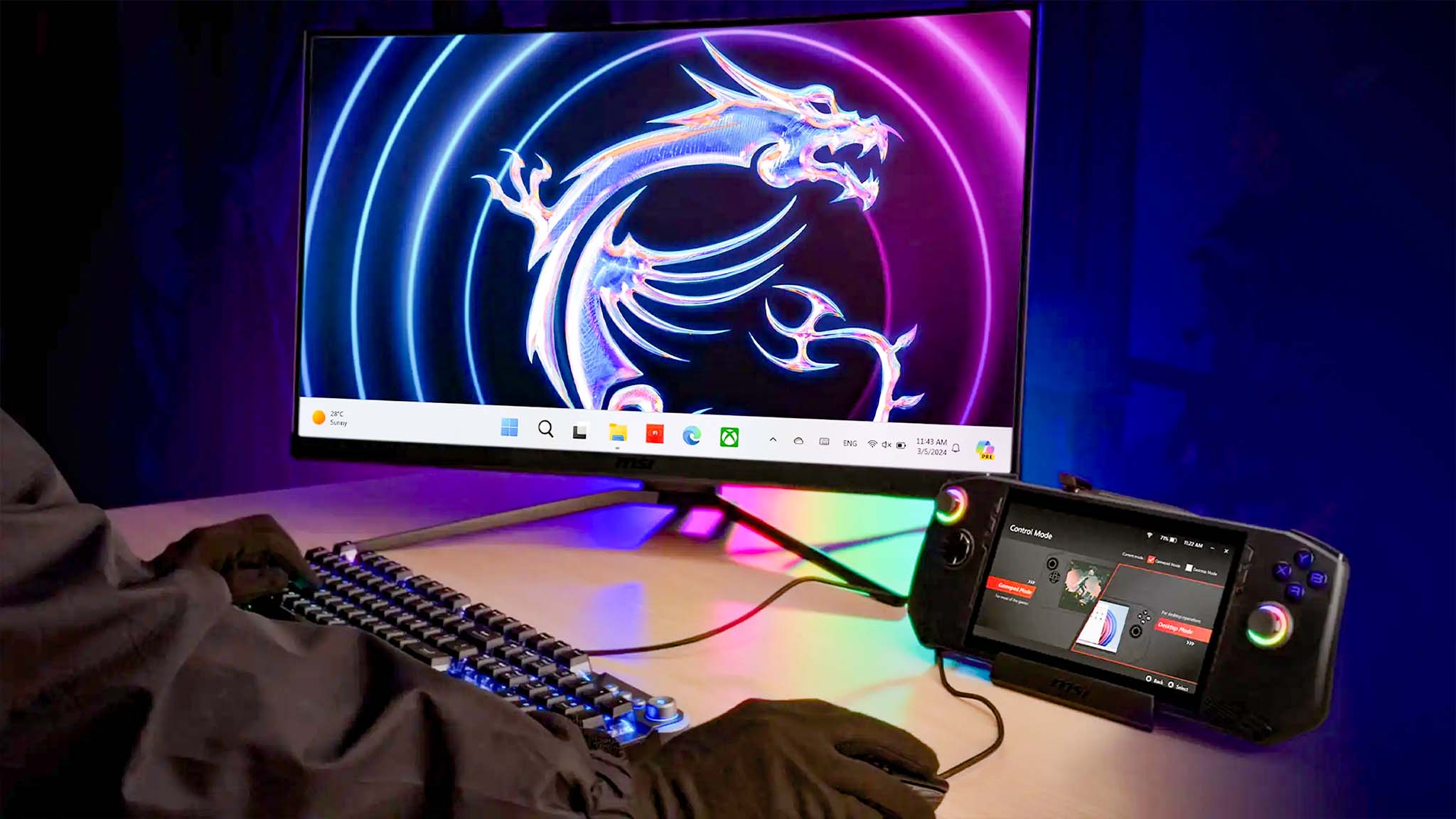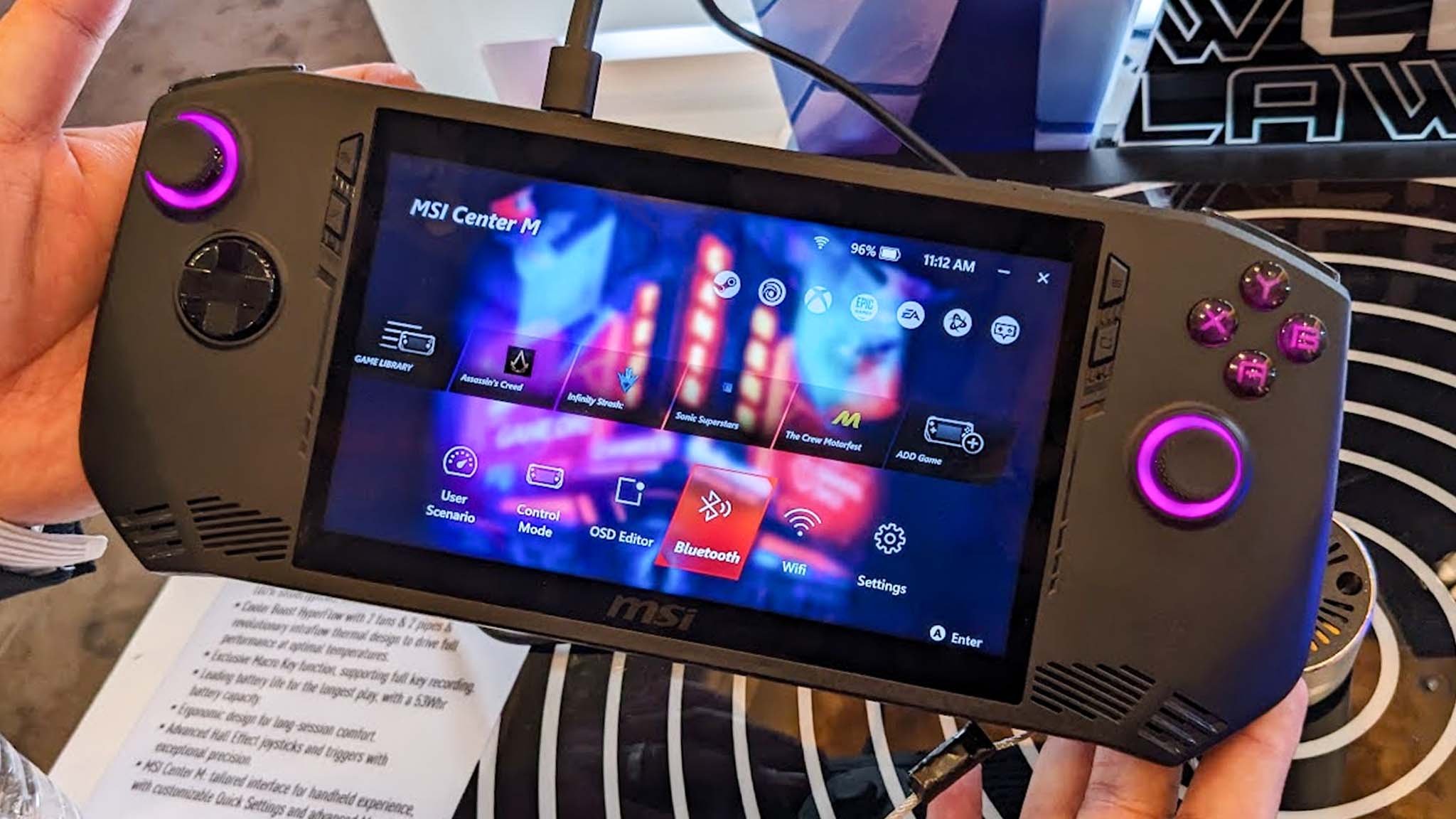MSI Claw vs ROG Ally: Which PC gaming handheld is best?
Both handhelds have their merits, but one is better than the other.
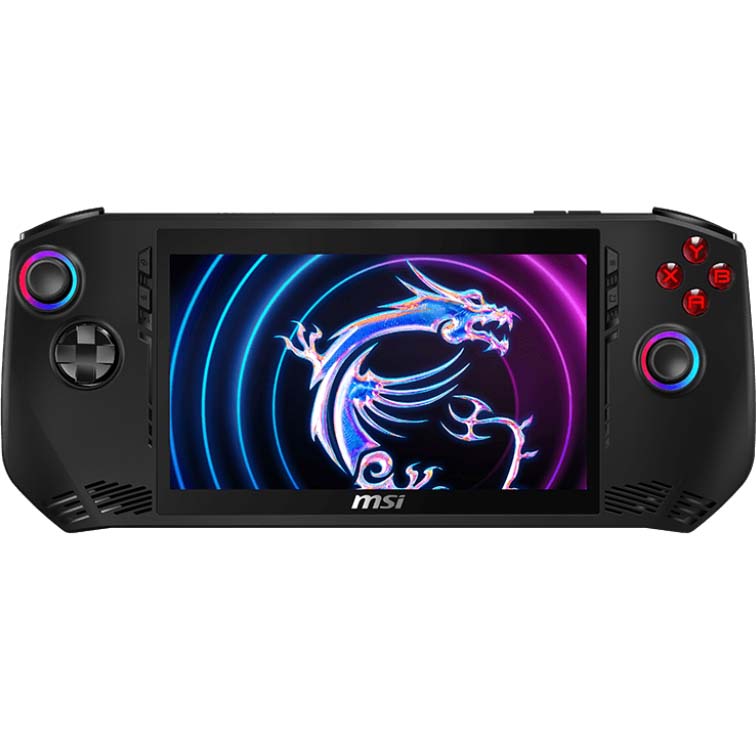
The MSI Claw is comfortable to hold due to the ergonomic grips and since it has Hall Effect joysticks, it's more likely that the controls will work well for a long time to come. The tradeoff for these features is a higher price point. Battery life is currently unknown, but there is a possibility that the processor could help it last longer than other gaming handhelds. We'll be testing this device and updating this page in the near future.
Pros
- Powerful Intel Core Ultra processor
- Good ergonomic grips
- Hall Effect joysticks
- Clean interface
- VRR and XeSS support
Cons
- More expensive
- Battery may or may not last long
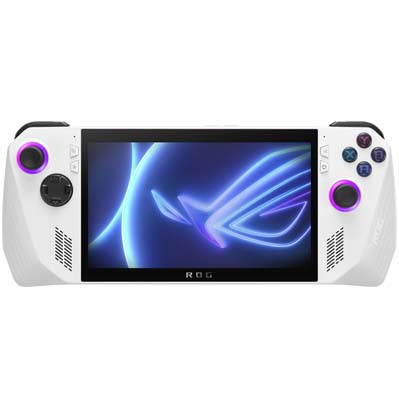
With its lower starting price point and tendency to go on sale, the ROG Ally makes for a great gaming handheld for people on a budget. It offers great game performance that is assisted via VRR support, and Asus regularly pushes updates that bring new features and conveniences to the device. However, it's more susceptible to joystick drift. What's more, it has an overheating problem that can cause microSD cards to malfunction, so it's better to install a larger SSD rather than rely on removable storage cards.
Pros
- Great performance
- More affordable
- Regularly receives system updates
- Comfortable and balanced design
- VRR and FSR support
Cons
- Overheating issue can fry microSD cards
- No Hall Effect joysticks
- Short battery life
When Asus released the ROG Ally last year, it made a huge splash as a competitor to the Steam Deck. Since then, multiple companies have released their own gaming handhelds and the latest to join the ranks is the MSI Claw.
The ROG Ally and MSI Claw are similar in that they both run Windows 11 and are basically small gaming laptops with controllers attached to them. So which of these devices is best? Let's dive in and compare what they have to offer.
MSI Claw vs ROG Ally: Specs
To begin with, take a look at the MSI Claw vs ROG Ally specs. After that, I'll dive into various aspects of the two devices and explain which one is better suited to different things.
| Header Cell - Column 0 | MSI Claw | ROG Ally |
|---|---|---|
| Price | $699 | $749 | $799 | $599 | $699 |
| Release date | March 2024 (US) | Jun. 13, 2023 |
| Processor | Intel Core Ultra 5-135H | Intel Core Ultra 7-155H | AMD Ryzen Z1 Extreme | AMD Ryzen Z1 |
| Storage | 512GB | 1TB SSD | Up to 512GB PCle 4.0 SSD |
| Memory | 16GB LPDDR5-6400 | 16GB LPDDR5 on board (6400MT/s dual channel) |
| OS | Windows 11 Home | Windows 11 Home |
| VRR | Yes | Yes |
| Connectivity | Intel Killer BE Wi-Fi 7 + Bluetooth 5.4 | Wi-Fi 6E + Bluetooth 5.2 |
| Display | 7-inch FHD (1920 x 1080) 16:9 touch screen, 120Hz IPS-Level touchscreen | 7-inch FHD (1920 x 1080) 16:9 IPS-level touchscreen, 120Hz, 500nits, 100% of sRGB, 120Hz |
| Ports | 1x USB-C Thunderbolt 4 port with PD charging and 1x microSD card reader | 1x USB-C port, 1x PCIe port, 1x microSD card slot, 1x headphone jack |
| Battery | 53WHrs, 6-Cell (65W PD adapter) | 40WHrs, 4S1P, 4-cell Li-ion (65W AC adapter) |
| Battery life | Unknown | Up to 4 Hours |
| Touchpads | None | None |
| Fingerprint sensor | Yes | Yes |
| Haptics | HD haptics, Gyro: 6-Axis IMU | HD haptics, Gyro: 6-Axis IMU |
| Speakers | 2x 2W speakers with Hi-Res Audio certification | 2 speakers with Hi-Res Audio certification |
| Dimensions | 11.6 x 4.6 x 0.83 inches (294 x 117 x 21.2mm) | 11.0 x 4.4 x 0.5 inches (279 x 111.8 x 12.7mm) |
| Weight | 1.5 lbs (675 grams) | 1.3 lbs (590 grams) |
MSI Claw vs ROG Ally: Price
Both the ROG Ally and the MSI Claw come in two different versions with separate price points. First off, there's the ROG Ally Z1 with 512GB of space that starts at $599, but then there's also the ROG Ally Z1 Extreme, a more powerful handheld, that starts with a $699 MSRP.
We've also seen the prices of the ROG Ally Z1 and Z1 Extreme reduce significantly during Best Buy sales events to just $399 and $599 respectively. So, it's far easier on your wallet to get one of these devices if you can catch it at a discount.
As for MSI Claw, there will be three configurations to choose from. An Intel Core Ultra 5-135H with 512GB SSD for $699.99, an Intel Core Ultra 7-155H with 512GB SSD for $749.99, and finally an Intel Core Ultra 7-155H with a 1TB SSD for $799.99. That's quite a bit more expensive than what the ROG Ally configurations are selling for.
Even with potential sales, it isn't likely that the MSI Claw's two versions will ever be cheaper to purchase than the ROG Ally.
All the latest news, reviews, and guides for Windows and Xbox diehards.
TL:DR PRICE WINNER: The ROG ALLY is more affordable than the MSI Claw due to Asus offering the lower Z1 version at $599 and the more powerful Z1 Extreme at a $699 price point. What's more, these devices have even gone on sale at Best Buy for $100 to $200 off, so if you catch them during a discount they can be a lot easier on your wallet. Meanwhile, the MSI Claw starts at $699 with a middle version at $749 and a more powerful version offered at a $799 MSRP.
MSI Claw vs ROG Ally: Performance and storage
During CES 2024, I had the opportunity to hold the MSI Claw and play several minutes of Assassin's Creed Mirage on it. While using it, I was struck by how smooth gameplay was. There was no choppiness, and everything reacted the way I expected it to. I'm planning on conducting MSI Claw testing to really get a feel for the system's performance, but so far the MSI Claw has left a good impression on me.
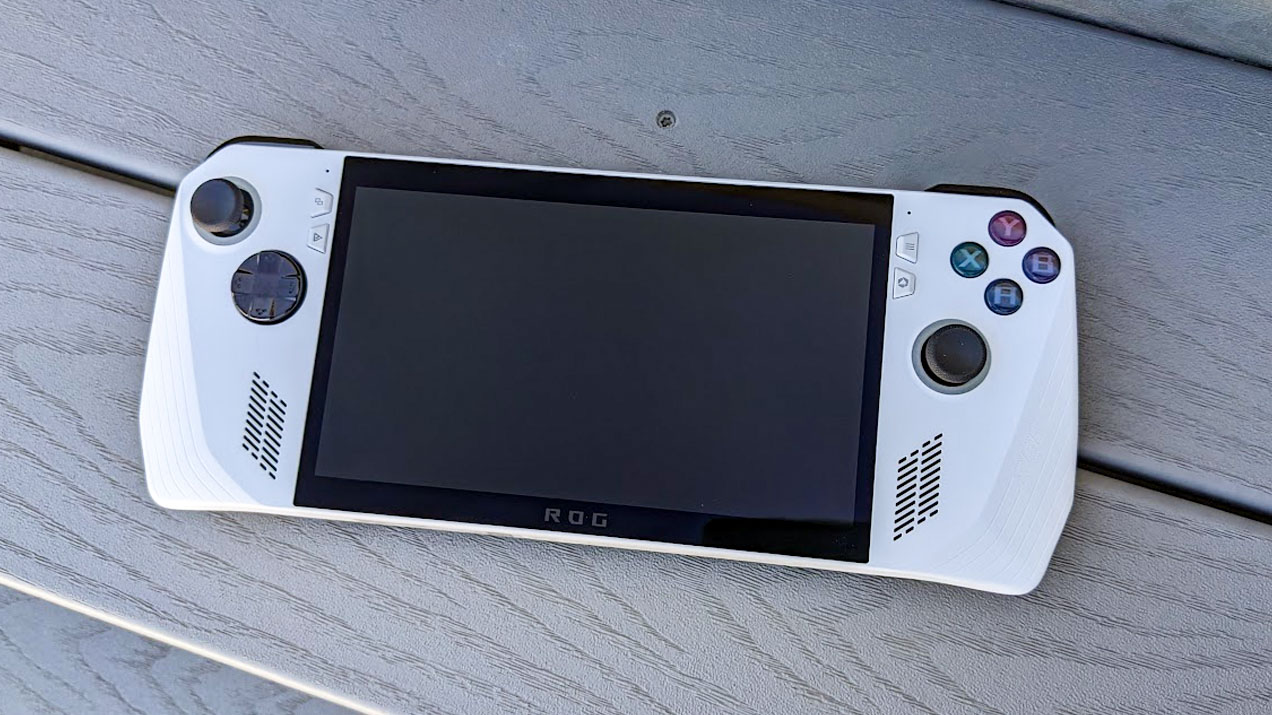
- MSI Claw vs Steam Deck
- Best ROG Ally battery packs
- Best ROG Ally microSD cards
- Best ROG Ally games and optimization
This isn't surprising given that the Claw is the first gaming handheld to feature the new Intel Core Ultra processor (formerly called Meteor Lake), a chip with an NPU (Neural Processing Unit) that allows the system to run far more efficiently. Seriously, the Intel Core Ultra processors mark the biggest CPU shift in 40 years, so it's very likely that the MSI Claw is the far better performer between the two handhelds.
As for storage, the MSI Claw can be purchased with either a 512GB SSD or a 1TB SSD. Both options give you plenty of room for your various game files, but the bigger capacity is better suited to people who access larger game libraries regularly. Of course, additional storage can easily be supplied using the microSD card slot.
Now, some early MSI Claw benchmarks did show that the MSI Claw underperformed compared to the ROG Ally. However, you shouldn't count the Claw out yet. You might recall that the ROG Ally didn't have the best performance at launch, but intensive updates throughout the following months allowed ASUS' handheld to play games more smoothly. As such, it is very likely that MSI Claw performance could be made better with the right updates over time.
I did our ROG Ally review, and as part of that, I played several hours worth of games on it and ran various benchmark tests to get a feel for the handheld's performance. Since then, I've continued to use my ROG Ally regularly to play various games. It has proved to be an excellent device that runs titles in a mostly smooth manner as long as settings are adjusted properly. Part of this is due to the ROG Ally having VRR support, but this is something the MSI Claw has too. What's more, thanks to its Intel CPU, the MSI Claw supports XeSS (Xe Super Sampling), which converts 1080p resolution to 4K with the help of AI for crisper viewing. Meanwhile, ROG Ally's AMD processor supports FSR (Fidelity Super Resolution), which similarly improves definition in game visuals.
When it comes to storage, the ROG Ally only comes with a 512GB SSD. As I talked about before, this is a good amount of space to hold a few large games, but you might want to add more storage if you tend to play a lot of different titles.
Now, Asus' handheld does have a big problem that you should be aware of. Due to an overheating issue, the ROG Ally can cause microSD cards to malfunction. So if you want to increase storage, it's best to install a larger SSD rather than using a microSD card. If you need help with that, you can check out my step-by-step guide on how to do an SSD upgrade on ROG Ally.
TL:DR PERFORMANCE AND STORAGE WINNER: It's too early to say before testing. Due to the fact that the MSI Claw uses the brand new Intel Core Ultra chips with an NPU, it's very likely that this handheld can offer better performance than ROG Ally if the system is designed properly. As for storage, MSI also offers a higher SSD capacity to choose from and additional storage can be supplied with a microSD card. Meanwhile, ROG Ally only comes with a lower SSD capacity option, and it's well known for an overheating issue that can fry microSD cards.
MSI Claw vs ROG Ally: Display
Before colorimeter testing, it's impossible to say which gaming handheld has the best display. Looking purely at the specs, it's likely that the screens are very similar or perhaps even the same. Both have 7-inch FHD IPS touchscreens that can reach up to a 120Hz refresh rate.
I've probably spent hundreds of hours with my ROG Ally by now, and I've never been distracted or disappointed with the display. Colors come through clearly, there's plenty of crisp detail to make out objects in environments, and there's also a good amount of contrast to help make things stand out. This is likely all the same for the MSI Claw.
I'll pay attention to the screens when I review the MSI Claw and will update this section when I learn more.
TL:DR DISPLAY WINNER: We have a tie, folks. Before testing, it looks as though the MSI Claw and ROG Ally's screens are basically the same.
MSI Claw vs ROG Ally: Buttons, joysticks, and grip
The MSI Claw has a sleek design with ergonomic grips, offset, joysticks, and large buttons. When I held it, it felt very well-balanced and all of the buttons responded beautifully to my presses. It's worth noting that it has Hall Effect triggers and joysticks, so it shouldn't develop drift issues as some other gaming handhelds do.
Technically, it does weigh a bit more than the ROG Ally, but the grip design makes it easy to hold for a while. All in all, it looks good and feels good too.
As for the ROG Ally, it too is well-balanced with grips that help relieve wrist and hand pressure. The buttons are also very large and easy to use. However, while the triggers use Hall Effect, the joysticks are potentiometers, which are susceptible to drift. So, it seems like the MSI Claw is a better option when it comes to longevity.
TL:DR CONTROLS AND GRIPS WINNER: Due to the inclusion of offset Hall Effect joysticks and large buttons, the MSI Claw offers better controls than the ROG Ally. Asus' handheld is by no means bad, but it could develop drift over time whereas the MSI Claw isn't likely to.
MSI Claw vs ROG Ally: Compatible games & software
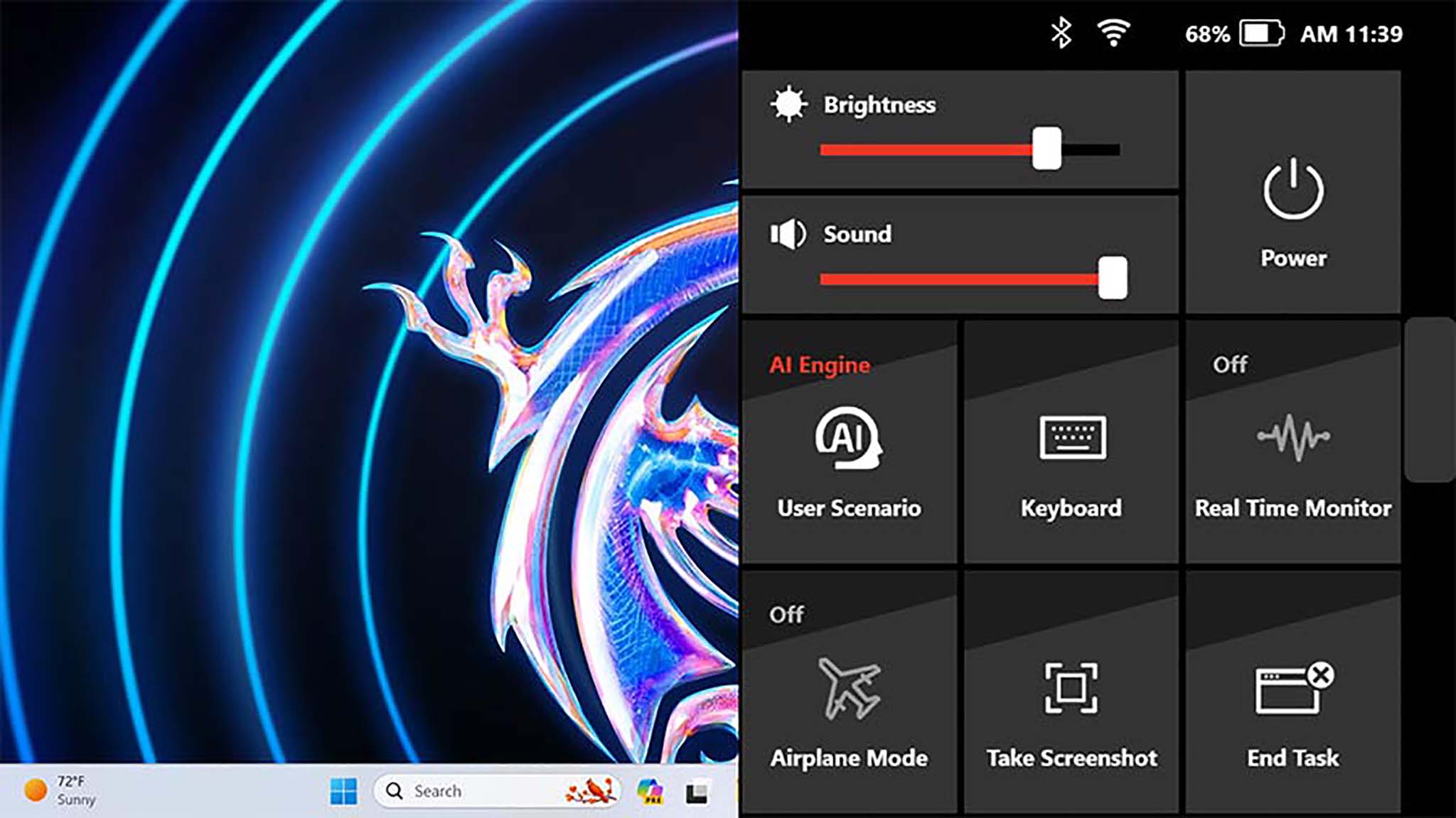
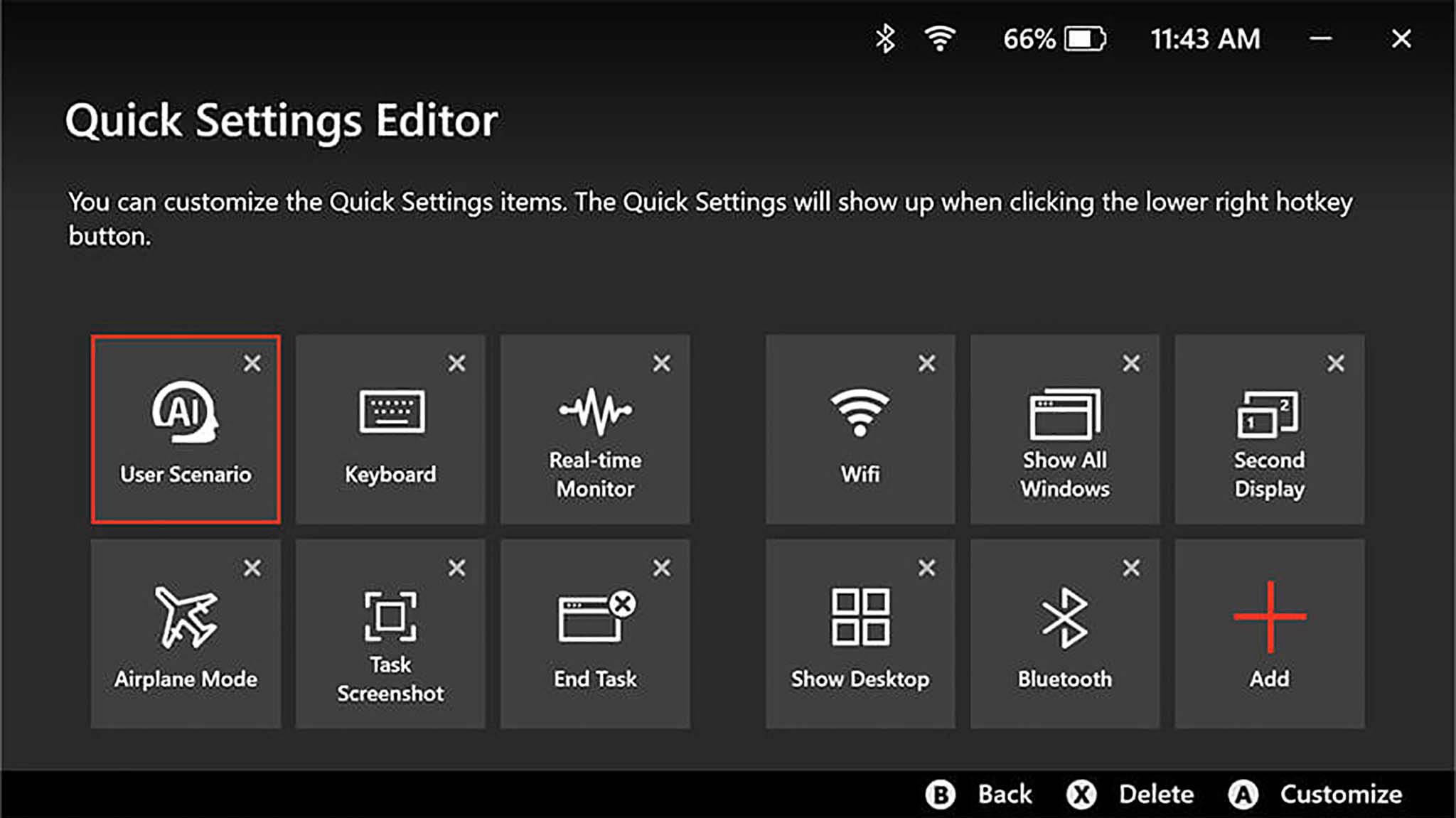


I only spent a few moments with the MSI Claw, but the MSI Classic M interface seemed to be clean and easy to interact with. As with so many other aspects, I'll need to spend more time with the Claw to get a full feel for how good the game launcher and setting customization options are.
Since both the ROG Ally and MSI Claw run Windows 11, there will likely be the same kind of bloatware running in the background on either one. You'll want to put a stop to certain programs and prevent others from running on startup in order for games to run more efficiently.
As for the ROG Ally itself, I've found that its Armoury Crate interface can be rather clunky at times and even slow to respond. However, the game launcher works very well and there are plenty of settings options to adjust to get the device running just the way you want it to.
Something I've been really impressed about is that the ROG Ally team has continued to push updates and improvements for the handheld to provide even more features and settings options. So, you can expect that the company will continue to do so going forward.
TL:DR SOFTWARE WINNER: I cannot fully pick a winner at this time until I have more experience with the MSI Claw. Suffice it to say that ROG Ally's Armoury Crate can be clunky, but that the Ally team has done a marvelous job adding additional options and settings as time has gone on. So it's possible ROG Ally has better customization.
MSI Claw vs ROG Ally: Battery life
One of the biggest issues that even the best gaming handhelds face today is short battery life. On average, most of these devices can only last between one and three hours while playing more intensive games like Cyberpunk 2077 on low settings. To be clear, battery life can last a few hours longer on less demanding games, but it really varies depending on the settings you have and the title you're playing.
That all being said, it's very likely that the MSI Claw is also somewhere in the one to three-hour battery life average. We'll know more when we do testing. For now, what we do know is that the Claw utilizes a 53Whr battery and that MSI claims it "lasts 50% longer," although the company is very unclear about what this is being measured against. Still, the Intel Core Ultra processor has been shown to increase battery life, so it's very possible it could have a good effect on the MSI Claw.
As for the ROG Ally, battery life typically lasts between 1.5 to two hours while I play games like Diablo IV or Baldur's Gate 3 on low settings. The longest I've ever gotten it to last was around four hours. It's not great, especially not for people who like to play long gaming sessions. But that's where you might want to invest in one of the best ROG Ally accessories, a dock that allows you to play on a monitor or TV while the handheld receives a charge.
TL:DR BATTERY LIFE WINNER: It's currently too early to tell. However, the MSI Claw's Intel Core Ultra processor might run more efficiently to the point that it helps the device last longer. We'll update this section after testing.
MSI Claw vs ROG Ally: Accessories
When the ASUS ROG Ally first launched, there weren't a ton of accessories for it outside of the official carrying case, ROG Gaming Charger Dock, and ROG XG Mobile eGPU. But then over time, more third-party accessories became available for the gaming handheld. Now, you can easily find ROG Ally docking stations, an internal SSD, screen protectors, carrying cases, thumbstick covers, grip covers, and more. If interested, check out our lists for the best ROG Ally accessories or the best ROG Ally power banks.
Since the MSI Claw is so new there aren't a lot of accessories for it outside of the official products on offer from MSI. Still, these cover a good range with an official docking station, lanyard, screen protector, carrying case, and even a keychain. Of course, we also know of several of the best microSD cards for MSI Claw as well. If the MSI Claw is popular enough, we're sure to see more third-party peripherals show up on the market. For now, you can look at our list of the best MSI Claw accessories.
Additionally, since the ROG Ally and MSI Claw are relatively similar in design, many of the same accessories can be used for both. You'll just need to double-check wattage and accessory dimensions before purchasing anything, just to make sure.
TL:DR ACCESSORIES WINNER: There are currently more dedicated accessories for the ROG Ally simply due to the fact that it has been out longer. However, MSI does offer a few official MSI Claw accessories. What's more, since the devices are pretty similar, many of the same accessories can be used for both gaming handhelds.
MSI Claw vs ROG Ally: Which should I buy?
Now we come down to the meat of it all — which gaming handheld is better? Overall, the ROG Ally is looking like the best option between the two. Its lower price point and tendency to go on sale make it an excellent option for people on a budget. Plus, the ROG Ally team does an excellent job updating the software so it provides more features and is more convenient to use over time. However, it does have a notable microSD card malfunction issue that could cause a major problem for you. As such, it's better to install a larger internal SSD rather than use a microSD card if you want to add more storage to it.
The MSI Claw with its Intel Core Ultra processor has failed to impress the people who have been able to try it out so far. However, when it comes to controls, having Hall Effect joysticks means that the MSI Claw isn't likely to encounter drift issues as time goes on whereas the ROG Ally just might. It currently offers lower performance, is more expensive, and is less likely to go on sale, so it's just not the best choice to spend your money on at the moment.

With its lower starting price point and tendency to go on sale, the ROG Ally makes for a great gaming handheld for people on a budget. It offers great game performance that is assisted via VRR support, and Asus regularly pushes updates that bring new features and conveniences to the device. However, it's more susceptible to joystick drift. What's more, it has an overheating problem that can cause microSD cards to malfunction, so it's better to install a larger SSD rather than rely on removable storage cards.

With the latest Intel Core Ultra processor that significantly increases system performance, the MSI Claw likely has an edge over the ROG Ally. It's comfortable to hold due to the ergonomic grips and since it has Hall Effect joysticks, it's more likely that the controls will work well for a long time to come. The tradeoff for these features is a higher price point. Battery life is currently unknown, but there is a possibility that the processor could help it last longer than other gaming handhelds. We'll be testing this device and updating this page in the near future.

Self-professed gaming geek Rebecca Spear is one of Windows Central's editors and reviewers with a focus on gaming handhelds, mini PCs, PC gaming, and laptops. When she isn't checking out the latest games on Xbox Game Pass, PC, ROG Ally, or Steam Deck; she can be found digital drawing with a Wacom tablet. She's written thousands of articles with everything from editorials, reviews, previews, features, previews, and hardware reviews over the last few years. If you need information about anything gaming-related, her articles can help you out. She also loves testing game accessories and any new tech on the market. You can follow her @rrspear on X (formerly Twitter).

